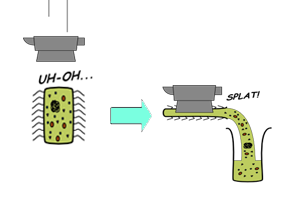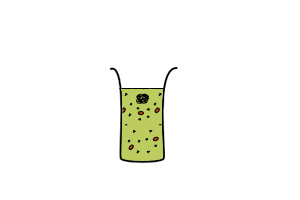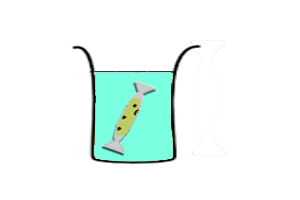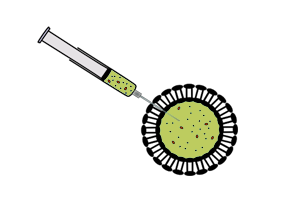Imperial/Cell-Free/Whatis
From 2007.igem.org
| Line 9: | Line 9: | ||
== Types of Extracts == | == Types of Extracts == | ||
| - | |||
{| style="width:800px;" cellpadding="2" cellspacing="0" align="center" | {| style="width:800px;" cellpadding="2" cellspacing="0" align="center" | ||
|- style="background:#ffffff; text-align:left;" color:white;" align="center" | |- style="background:#ffffff; text-align:left;" color:white;" align="center" | ||
| Line 48: | Line 47: | ||
|- style="background:#ffffff; text-align:left;" color:white;" align="center" | |- style="background:#ffffff; text-align:left;" color:white;" align="center" | ||
|| [[Image:Icgems-bulksol.png|left|200px]] | || [[Image:Icgems-bulksol.png|left|200px]] | ||
| - | || | + | || '''Batch-mode CFS''' |
| - | '''Batch-mode CFS''' | + | |
*Transcription-translation reaction is carried out in bulk solution. Expression is usually limited by nutrient (nucleotides and amino acids) and energy supplies. | *Transcription-translation reaction is carried out in bulk solution. Expression is usually limited by nutrient (nucleotides and amino acids) and energy supplies. | ||
|- style="background:#ffffff; text-align:left;" color:white;" align="center" | |- style="background:#ffffff; text-align:left;" color:white;" align="center" | ||
|| [[Image:Icgems-exchange.png|left|200px]] | || [[Image:Icgems-exchange.png|left|200px]] | ||
| - | || | + | || '''Continuous-exchange CFS''' |
| - | '''Continuous-exchange CFS''' | + | |
*Transcription-translation reaction is separated from feeding solution by a dialysis membrane. Expression is sustained by diffusion of nutrients from the feeding soltuion to the reaction. Wastes generated by the reaction is diluted in the feeding solution. | *Transcription-translation reaction is separated from feeding solution by a dialysis membrane. Expression is sustained by diffusion of nutrients from the feeding soltuion to the reaction. Wastes generated by the reaction is diluted in the feeding solution. | ||
|- style="background:#ffffff; text-align:left;" color:white;" align="center" | |- style="background:#ffffff; text-align:left;" color:white;" align="center" | ||
|| [[Image:Icgems-vesicles.png|left|200px]] | || [[Image:Icgems-vesicles.png|left|200px]] | ||
| - | || | + | || '''Vesicle-encapsulated CFS''' |
| - | '''Vesicle-encapsulated CFS''' | + | |
*The reaction is separated from feeding solution by a phospholipid bilayer. Expression is maintained for a longer time period than batch-mode CFS because of exchange of materials between the reaction and the feeding solution across the membrane. More reliable exchange of materials is established by inserting a non-specific pore protein with a suitable channel size into the phospholipid bilayer. | *The reaction is separated from feeding solution by a phospholipid bilayer. Expression is maintained for a longer time period than batch-mode CFS because of exchange of materials between the reaction and the feeding solution across the membrane. More reliable exchange of materials is established by inserting a non-specific pore protein with a suitable channel size into the phospholipid bilayer. | ||
|} | |} | ||
Revision as of 22:05, 20 October 2007

Introduction
Cell-free systems (CFS) are essentially in vitro translation systems that can have potential advantages over in vivo gene expression when considered in the context of synthetic biology. Two components define the characteristics of these in vitro translation machineries - the kind of cell extract used, as well as the type of compartmentalization that the cell extract is put in.
Together, cell-free systems allow the realization of new potential in simple constructs, as well as the flexibility to functionalize and establish simplistic controls for the system. As the specifications of our projects necessitate a cell-free environment, part of our contributions to iGEM involve the investigation and characterization of cell-free expression systems as a new chassis for the Registry.
Types of Extracts
Comparison between different types of cell extracts
|
|
|
| |
Types of Compartmentalization
Previous research has been done to optimize cell extracts for in vitro protein synthesis. Their endogenous genetic content is removed so that exogenous DNAs or mRNAs can be expressed. Nuclease activity has been reduced and degradation of certain amino acids has been identified. ATP regenerating systems have also been added to improve the energy supply. Different strategies of compartmentalization have been explored to prolong the lifespan of CFS.
Batch-mode CFS
| |
Continuous-exchange CFS
| |
Vesicle-encapsulated CFS
|



